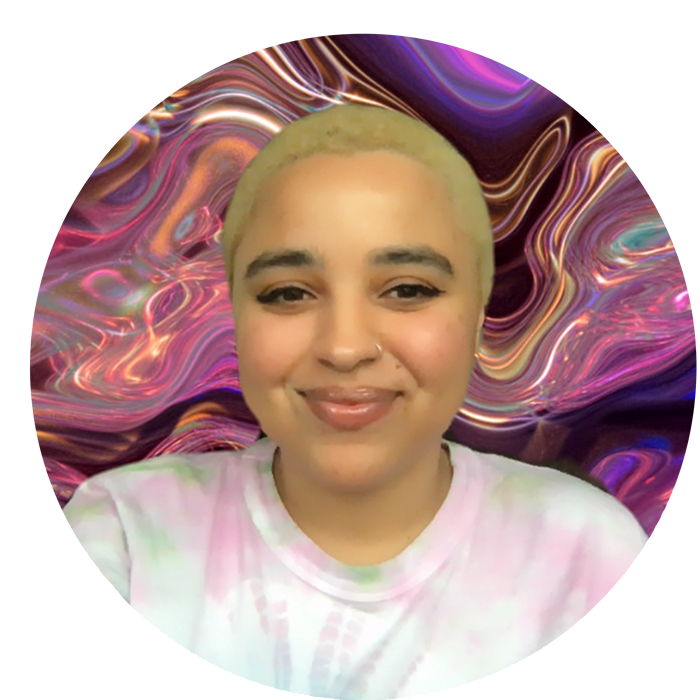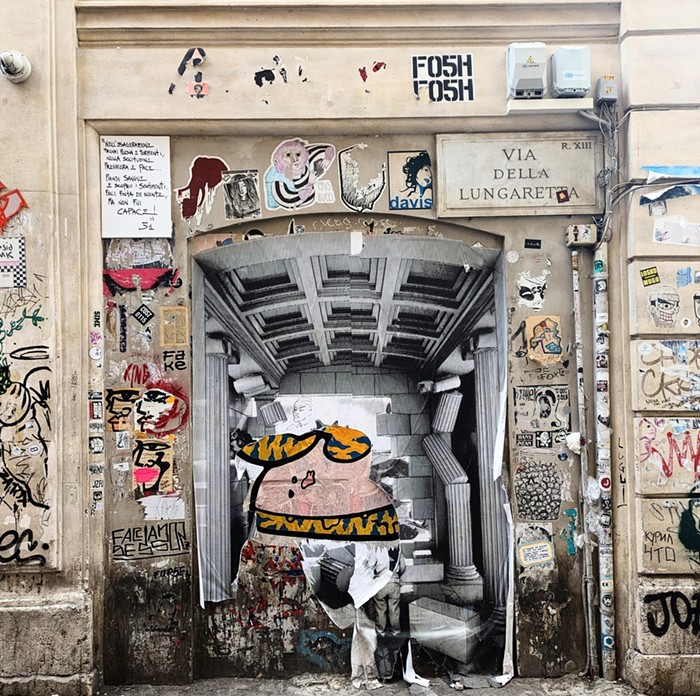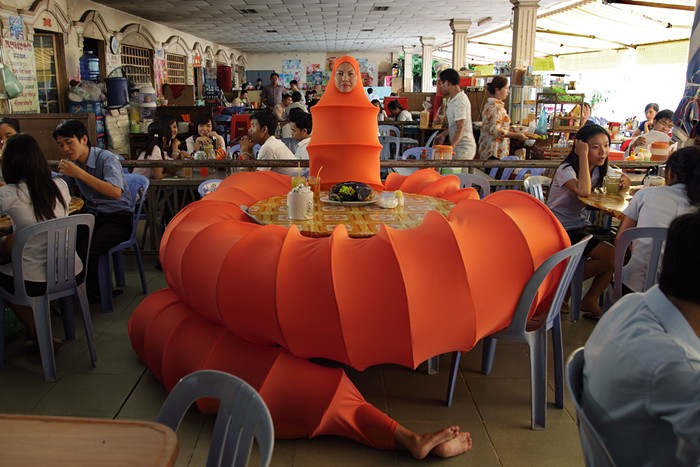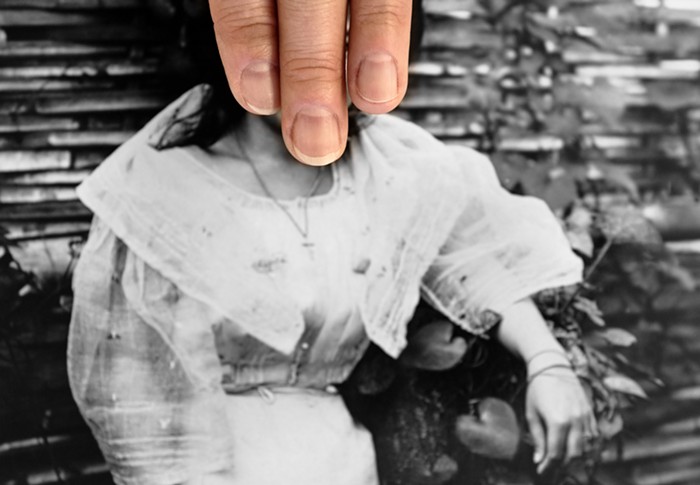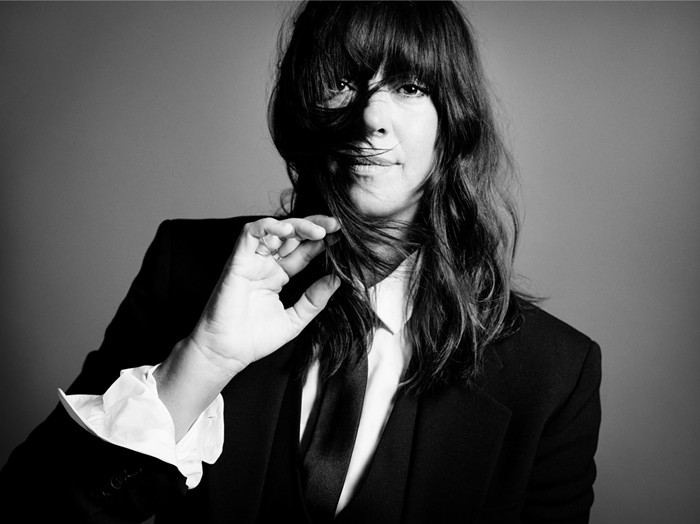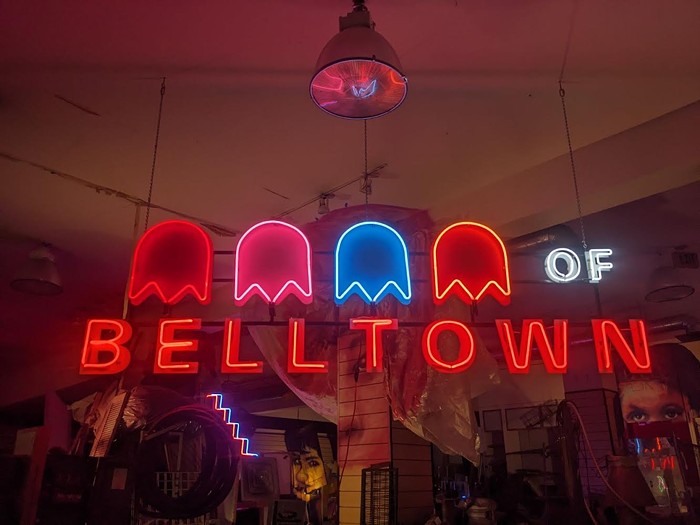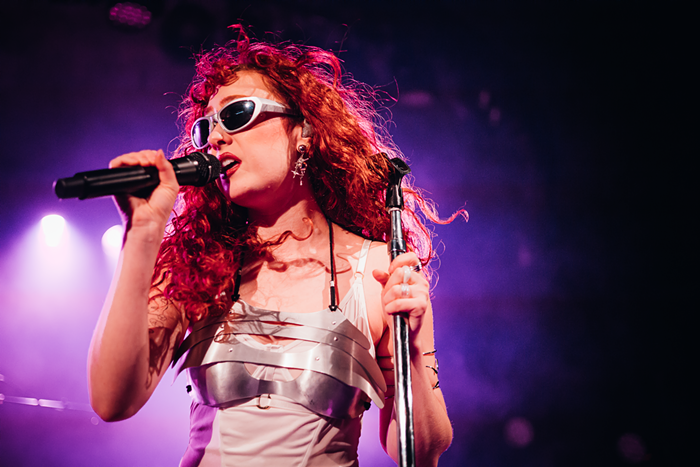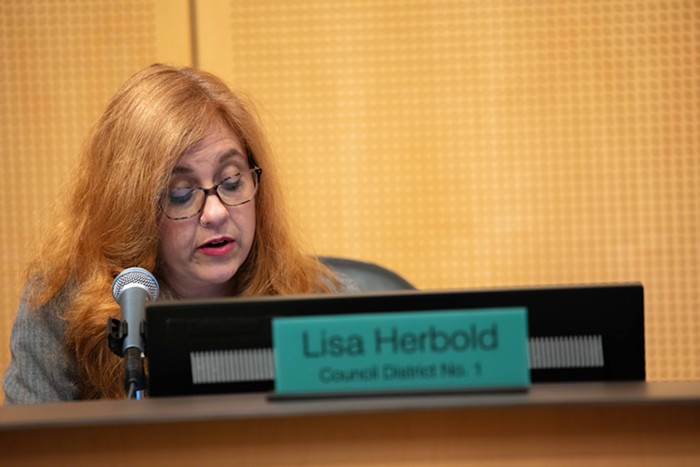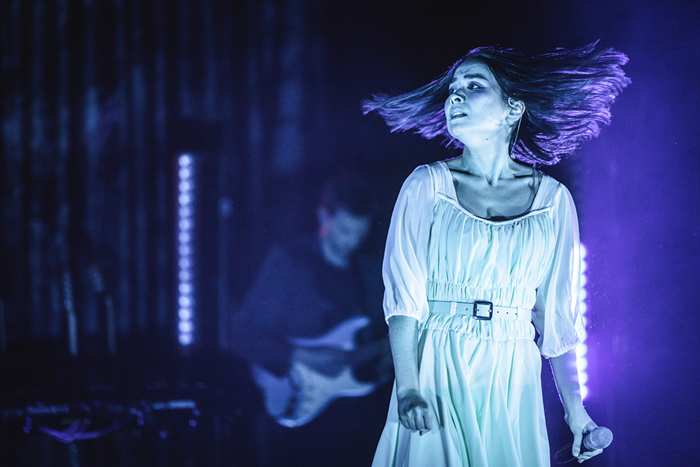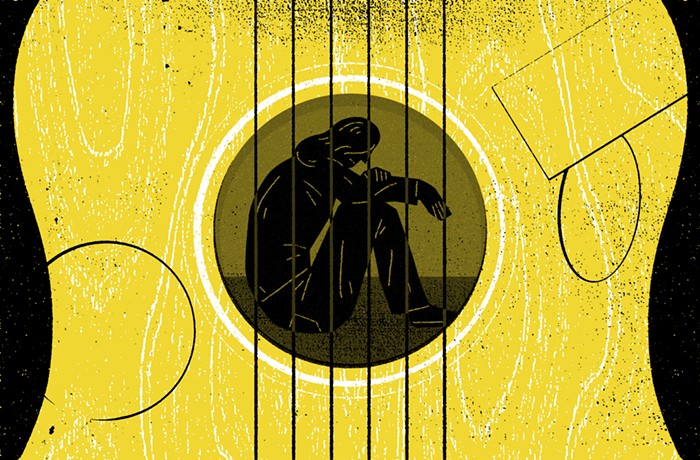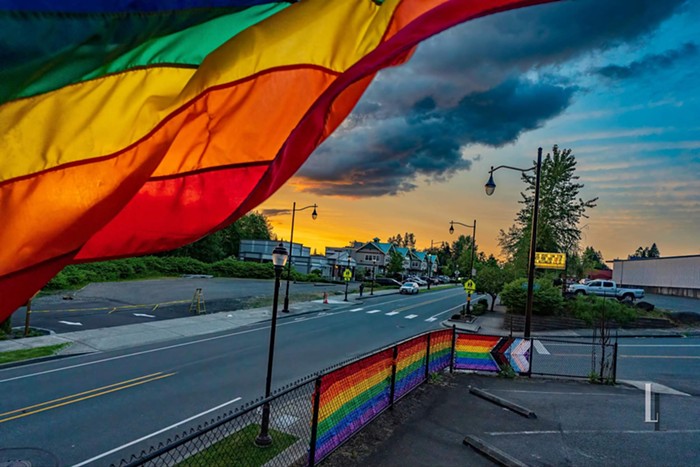
On a recent sunny afternoon, I learned a lot in the unruly garden outside of Seattle-based artist Saya Moriyasu’s studio.
For one, that some people consider bluebells—the ubiquitous, bright blue flower I spot and savor on all my walks around the city—to be a pesky weed. Moriyasu tells me that she has to clean up their goopy, dead petals from the path as they slowly die in the sun around this time of year.
Another is that her delightful ceramic sculptures pair well with the outdoors. Previously, I'd only seen Moriyasu’s work in a gallery. But on this spring day in her garden, her fantastical creatures seem at home amongst blades of grass or perched on a wooden stump. As we chat, I lock eyes with the broken head of one of her famous fu dog sculptures. I think this is how everyone should encounter her art.
Moriyasu’s airy studio opens right into this garden, and I can see its subtle influence in her work. Right now she’s preparing for a show at J. Rinehart Gallery, and her newer sculptures huddle together on a tabletop, all painted similar colors—black, slime green, neon red, and a gray-beige. They vibrate, beg for your attention.
Moriyasu moved up from Oregon in the ‘80s to attend the University of Washington. Graduating with a degree in ceramics (and business and art), she moved away from the practice to focus more on installation art and working with found objects. However, more than two decades ago, her artistic journey changed when she impulsively went to check out a kiln her neighbor put up for sale.
"She was just like, 'You are not leaving without this thing,'" Moriyasu tells me, laughing while recalling how the woman kept lowering the price to entice her to buy. "It's funny because she ended up sealing my fate."

With a kiln at her disposal, Moriyasu got back into clay. First, it started as a hobby outside her professional art practice; she'd host craft nights with friends and make objects just for fun. But when faced with making work for an upcoming show, she realized her fun side project was the work. “It was just what came out of me,” she reflects. “It just kind of happened.”
The daughter of an upper-class immigrant Japanese father interested in fine art and a white working-class mother raised on a farm, Moriyasu's sculptures and art reflect her mixed-race and class background. "I grew up in a house with crocheted afghans but then it’d be next to this museum-quality Japanese piece of art," she says.
This clash of low and high culture comes across humorously in some of her pieces. At her studio, she shows me a sculpture with the head of a noble-looking seal—but the head is on top of a human body with a giant ass. Where the buttcheeks should be are two lighter colored circles, as if the creature had shaved just its rear end. It’s a beautifully made, oddly whimsical object that seems to wink at you: Don’t take anything too seriously.
Moriyasu tells me she’ll often start making work that she doesn’t realize riffs off of artistic traditions from Japanese culture. She points to a black sculpture of a dog’s head positioned near us. It has a grumpy expression, its ears and mouth sagging toward the table. Where the eyes should be are just two holes.
When she showed the piece to a friend, they pointed out that the dog was “definitely haniwa,” a type of clay sculpture placed on top of burial mounds in early Japanese history. These funerary objects could take several forms—humans, horses, houses, pots—and it’s unclear what their exact use was, though they have a guardian-like quality. Moriyasu grew up around modern-day interpretations of haniwas, using their many holes as planters. And now they appear in her work when the world seems to need guardian figures more than ever.

After experiencing some light controversy over a proposed beaver statue in Spokane, Moriyasu focused on creating work for her upcoming show, spooky actions from a distance, which opens next week. Taking the title from an Albert Einstein quote, she tells me that many of these pieces draw from the haniwa tradition—protectors for these trying times.
But also, she’s really interested in the concept of “inside/outside”: things that are outside the body, things that are within the body. If you look at her new work, you can see it's obsessed with holes—are they eyes? Ears? Bellybuttons? Mouths?
Some of Moriyasu's guardian-like sculptures have bellies turned into fire pots, inspired by the time she’s spent outside with friends during quarantine congregating around a fire. Other creatures lift out of built-in sections or have giant holes to peer through. It’s playful but also reflects a sense of body paranoia, something many of us have experienced over the last year.
Part of her interest in the "inside/outside" is a holdover from the Trump era, she says, and the discourse around living in political or informational bubbles. But it’s also the influence of the pandemic, which has us obsessed with our germ bubbles. We’ve spent a whole year covering the two main orifices on our faces to prevent the spread of the deadly respiratory disease. Moriyasu is interested in what’s behind those masks, and it's fun to get lost in her imagination.

You’ll have a chance to see some of these sculptures for yourself, along with over 50 ceramic wall paintings, when spooky actions at a distance opens on Friday, May 28 at J. Rinehart Gallery. The space will live stream the opening reception or you can stop by Wednesday-Saturday, 11am-5pm. Don't miss it.
